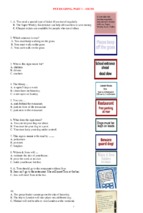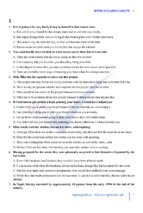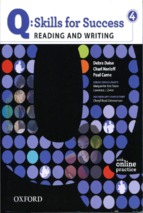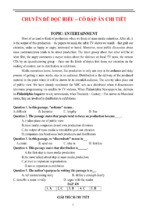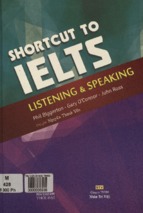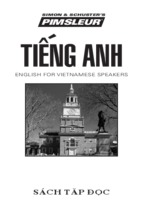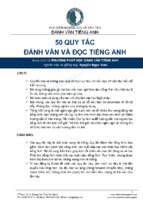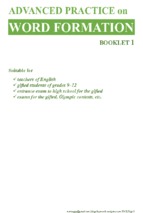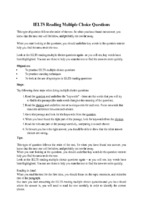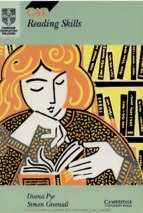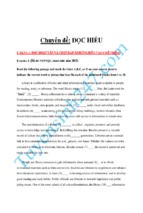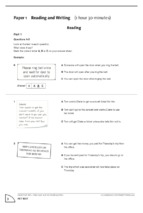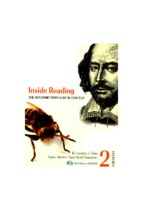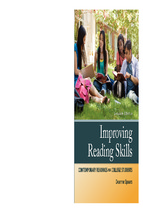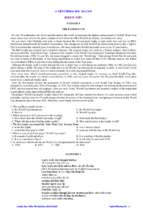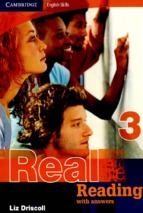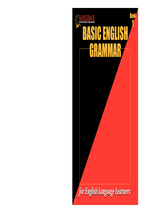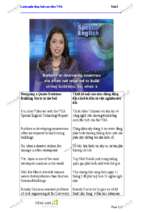®
The Definitive RC Guide
Copyright 2010, by Aristotle Prep
2
Aristotle Prep®
Also Check Out:
- Aristotle Sentence Correction Grail
Available for FREE Download on our website
1) Aristotle US B-Schools Ranking 2010
2) Quant Concepts & Formulae
3) Global B-School Deadlines 2010-11
4) The Tense Tutorial
5) OG 11 & 12 Unique Questions’ list
6) GMAT Scoring Scale Conversion Matrix
www.aristotleprep.com
3
Copyright, Legal Notice and Disclaimer:
All contents copyright by Aristotle Prep. No part of this book
may be reproduced or transmitted in any form, by any means
(electronic, photocopying, recording, or otherwise) without the
prior written permission of Aristotle Prep. If you received this
publication from any source other than www.aristotleprep.com,
you've received a pirated copy. Please contact us via e-mail at
[email protected] and notify us of the situation.
Any trademarks, service marks, product names or named
features are assumed to be the property of their respective
owners, and are used only for reference. There is no implied
endorsement if we use one of these terms.
Although the authors and publisher have made every reasonable
attempt to achieve complete accuracy of the content in this
book, they assume no responsibility for errors or omissions. You
should use this information at your own risk.
www.aristotleprep.com
4
Contents
1. Introduction………………………………………………………………………5
2. Low Difficulty Passages 1-33……………………………………………..7
3. Medium Difficulty Passages 34-66…………………………………….74
4. High Difficulty Passages 67-99………………………………………….142
5. Answers & Explanations…………………………………………………..212
www.aristotleprep.com
5
Introduction
Reading Comprehension (RC) is perhaps one of the most difficult to improve
areas on the GMAT. Unlike Sentence Correction or Critical Reasoning –
sections in which there are several strategies that can appreciably improve
your performance – there is no great strategy you can use for Reading
Comprehension. For those who like to read and who have been exposed to
different types of books, this section can be a breeze whereas for those who
are not too ‗literally‘ inclined, this section can be a major problem area;
unfortunately, most students fall in the latter category.
So what should one do then?
The single best way to improve your performance in the RC section is by
practicing as many passages as you can, especially from diverse subject
areas. While there is a lot of practice content available for SC and CR, we felt
there was no similar practice material available for RC. Even the passages in
OG are not enough; plus a lot of them have too many questions which makes
them non–representative of the actual GMAT.
This is where RC – 99 comes into the picture. This book has 99 passages
across difficulty levels and subject areas and the number and types of
questions are very accurate representation of the actual GMAT. Here are some
of the key features of this book:
Passages graded by difficulty level
Topic, Scope & Passage Map provided for each passage
Average of 3 questions per passage – the same as in the actual GMAT
Questions are a mix of Inference, Global, Detail and some other
miscellaneous ones as tested on the GMAT
Easy passages have more of Global and Detail questions whereas
difficult passages have more of Inference and Roman Numeral
questions, just like it is on the actual GMAT
Detailed answer explanations for each question
How to use this book?
According to most students, RC is perhaps the most boring area of the GMAT;
this is why it is not recommended that you do too many passages at a stretch
since you can quickly lose interest and as a result get a lot of the answers
wrong.
www.aristotleprep.com
6
You should ideally target 3 to 4 passages everyday taking roughly 9 minutes
for each passage (both to read and to answer the questions). You can either
start from the low difficulty level and gradually move up difficulty levels or you
can do a mix of passages from across the three difficulty levels that we have
put them into.
At this pace it will take you around 25 days to a month to finish this book and
when you subsequently take a full length test you will see the difference this
practice makes to your performance in the RC section.
As always we would love to have your feedback on whether you found this
book useful, do mail us the same on
[email protected]
Good luck!
P.S. – While we have tried to provide as detailed an explanation as possible
for each of the questions discussed in this book, in case you are still not clear
about a particular question do put up your query (mentioning the passage
number and the question number) on the ‗Forums‘ section on our website –
www.aristotleprep.com. We promise to revert within 24 hours of your post.
www.aristotleprep.com
7
LOW
DIFFICULTY
www.aristotleprep.com
8
Passage - 1
5
10
15
20
25
30
35
Once surrounded and protected by vast wilderness, many of the
national parks are adversely affected by activities outside their
boundaries. The National Park Organic Act established the national
park system and empowered the Secretary of the Interior to manage
activities within the parks. Conditions outside park boundaries are not
subject to regulation by the Park Service unless they involve the direct
use of park resources.
Several approaches to protecting the national parks from external
degradation have been proposed, such as one focusing on enacting
federal legislation granting the National Park Service broader powers
over lands adjacent to the national parks. Legislation addressing
external threats to the national parks twice passed the House of
Representatives but died without action in the Senate. Also brought to
the table as a possible remedy is giving the states bordering the parks
a significant and meaningful role in developing federal park
management policy.
Because the livelihood of many citizens is linked to the management of
national parks, local politicians often encourage state involvement in
federal planning. But, state legislatures have not always addressed the
fundamental policy issues of whether states should protect park
wildlife.
Timber harvesting, ranching and energy exploration compete with
wildlife within the local ecosystem. Priorities among different land uses
are not generally established by current legislation. Additionally, often
no mechanism exists to coordinate planning by the state
environmental regulatory agencies. These factors limit the impact of
legislation aimed at protecting park wildlife and the larger park
ecosystem.
Even if these deficiencies can be overcome, state participation must be
consistent with existing federal legislation. States lack jurisdiction
within national parks themselves, and therefore state solutions cannot
reach activities inside the parks, thus limiting state action to the land
adjacent to the national parks. Under the supremacy clause, federal
laws and regulations supersede state action if state law conflicts with
federal legislation, if Congress precludes local regulation, or if federal
regulation is so pervasive that no room remains for state control.
Assuming that federal regulations leave open the possibility of state
control, state participation in policy making must be harmonized with
existing federal legislation.
The residents of states bordering national parks are affected by park
management policies. They in turn affect the success of those policies.
This interrelationship must be considered in responding to the external
threats problem. Local participation is necessary in deciding how to
protect park wildlife. Local interests should not, however, dictate
45 national policy, nor should they be used as a pretext to ignore the
threats to park regions.
40
www.aristotleprep.com
9
1. What is the main purpose of the author in writing the passage?
A. argue that rampant timber harvesting is degrading national parks
B. describe a plan of action to resolve an issue
C. discuss different approaches to dealing with a problem
D. suggest that local participation is necessary to solve the problem described
E. to assert that national parks are adversely affected by activities outside
their boundaries
2. The passage provides support for which of the following assertions?
A. The National Park Organic Act gave the Secretary of the Interior the right
to overrule state government policy in lands adjacent to national parks.
B. The federal government has been selling national park land to state
governments in order to raise money for wildlife conservation.
C. The actions of state governments have often failed to promote the
interests of national park wildlife.
D. Local politicians want the federal government to turn control of national
parks over to state governments.
E. Timber harvesting and energy exploration have not had any impact on
national parks
3. In the context of the passage, the phrase external degradation (line 10) refers to
which of the following:
A. threats to national parks arising from the House of Representative's
willingness to address environmental issues.
B. threats to national parks arising from state government environmental
policies.
C. threats to national parks arising from local politicians‘ calls for greater
state involvement in national park planning.
D. threats to national parks arising from the National Park Organic Act.
E. threats to national parks arising from the lack of local support
4. According to the passage, which of the following developments is most likely if
environmental cooperation between the federal government and state
governments does not improve?
A.
B.
C.
D.
E.
A further decline in the land area of national parks
A further increase in federal ownership of land adjacent to national parks
A further growth in the powers of the National Park Service
A further loss of species in national parks
A further increase in timber harvesting activities
www.aristotleprep.com
10
Passage - 2
5
10
15
20
25
30
35
40
Henry Varnum Poor, editor of American Railroad Journal, drew the
important elements of the image of the railroad together in 1851,
―Look at the results of this material progress...the vigor, life, and
executive energy that followed in its train, rapidly succeeded by
wealth, the refinement and intellectual culture of a high civilization.
All this is typified, in a degree, by a locomotive. The combination in
its construction of nice art and scientific application of power, its
speed surpassing that of our proudest courser, and its immense
strength, are all characteristic of our age and tendencies. To us, like
the telegraph, it is essential, it constitutes a part of our nature, is a
condition of our being what we are.‖
In the third decade of the nineteenth century, Americans began
to define their character in light of the new railroads. They liked the
idea that it took special people to foresee and capitalize on the
promise of science. Railroad promoters, using the steam engine as a
metaphor for what they thought Americans were and what they
thought Americans were becoming, frequently discussed parallels
between the locomotive and national character, pointing out that
both possessed youth, power, speed, single-mindedness, and bright
prospects.
Poor was, of course, promoting acceptance of railroads and
enticing his readers to open their pocketbooks. But his metaphors
had their dark side. A locomotive was quite unlike anything
Americans had ever seen. It was large, mysterious and dangerous;
many thought that it was a monster waiting to devour the unwary.
There was a suspicion that a country founded upon Jeffersonian
agrarian principles had bought a ticket and boarded a train pulled by
some iron monster into the dark recesses of an unknown future.
To ease such public apprehensions, promoters, poets, editors,
and writers alike adopted the notion that locomotives were really
only ―iron horses,‖ an early metaphor that lingered because it made
steam technology ordinary and understandable. Iron horse
metaphors assuaged fears about inherent defects in the national
character, prompting images of a more secure future, and made an
alien technology less frightening, and even comforting and congenial.
Essayist Ralph Waldo Emerson saw the locomotive as an agent of
domestic harmony. He observed that ―the locomotive and the
steamboat, like enormous shuttles, shoot every day across the
thousand various threads of national descent and employment and
bind them fast in one web,‖ adding ―an hourly assimilation goes
forward, and there is no danger that local peculiarities and hostilities
should be preserved. To us Americans, it seems to have fallen as a
political aid. We could not else have held the vast North America
together, which we now engage to do.‖
www.aristotleprep.com
11
1. Which of the following claims would the author of the passage most agree
with?
A. The railroad undermined America‘s progressive tendencies.
B. Railroad promoters like Poor denounced Jeffersonian agrarian
principles.
C. The Ameicans in general were against the railroad
D. Ralph Waldo Emerson thought that the railroad would harm America.
E. Americans generally supported the development of the railroad.
2. The passage is primarily concerned with which of the following?
A. criticise one interpretation of the early American railroads
B. discuss the early years of the railroad and its connection to the
American character of the time.
C. suggest that railroads were the most important development in the
history of America
D. describe the apprehension with which most of the Americans greeted
the early railroads
E. assert that Americans were tricked into believing that the railroads were
beneficial for them
3. According to the passage, which of the following is most likely to be true
about Ralph Waldo Emerson‘s beliefs?
A. He felt that Americans should adhere strictly to Jeffersonian agrarian
principles.
B. He thought that the railroad was as important as the telegraph.
C. He felt that technological progress would help to unify Americans.
D. He thought that railroad promoters were acting against America‘s best
interests.
E. His metaphors had a dark side to them
4. Suppose that an early nineteenth-century American inventor had developed a
device that made it easier to construct multi-story building. How would early
nineteenth-century Americans be expected to react to this invention?
A. They would not support society‘s use of such a device.
B. They would generally support society‘s use of such a device.
C. They would have no opinion about society‘s use of such a device.
D. They themselves would not use such a device.
E. They would initially view such a device with skepticism
www.aristotleprep.com
12
Passage – 3
5
10
15
20
25
30
35
40
Suspicious as they are of American intentions, and bolstered by court
rulings that seem to give them license to seek out and publish any and
all government secrets, the media‘s distrust of our government,
combined with their limited understanding of the world at large,
damages our ability to design and conduct good policy in ways that the
media rarely imagine.
The leak through which sensitive information flows from the
government to the press is detrimental to policy in so far as it almost
completely precludes the possibility of serious discussion. The fear that
anything they say, even in what is construed as a private forum, may
appear in print, makes many people, whether our own government
officials or the leaders of foreign countries, unwilling to speak their
minds.
Must we be content with the restriction of our leaders‘ policy
discussions to a handful of people who trust each other, thus limiting
the richness and variety of ideas that could be brought forward
through a larger group because of the nearly endemic nature of this
problem? It is vitally important for the leaders of the United States to
know the real state of affairs internationally, and this can occur only if
foreign leaders feel free to speak their minds to our diplomats.
Until recently, it looked as if the media had convinced the public
that journalists were more reliable than the government; however, this
may be changing. With the passage of time, the media have lost
lustre. They—having grown large and powerful—provoke the same
public skepticism that other large institutions in the society do. A
series of media scandals has contributed to this. Many Americans have
concluded that the media are no more credible than the government,
and public opinion surveys reflect much ambivalence about the press.
While leaks are generally defended by media officials on the
grounds of the public‘s ―right to know,‖ in reality they are part of the
Washington political power game, as well as part of the policy process.
The "leaker" may be currying favour with the media, or may be
planting information to influence policy. In the first case, he is helping
himself by enhancing the prestige of a journalist; in the second, he is
using the media as a stage for his preferred policies. In either
instance, it closes the circle: the leak begins with a political motive, is
advanced by a politicized media, and continues because of politics.
Although some of the journalists think they are doing the work, they
are more often than not instruments of the process, not prime movers.
The media must be held accountable for their activities, just like every
other significant institution in our society, and the media must be
forced to earn the public‘s trust.
www.aristotleprep.com
13
1. Based on the information in the passage, with which of the following
statements would the author most likely agree?
A. Feeding the public misinformation is warranted in certain situations.
B. The public has a right to know the real state of foreign affairs.
C. The fewer the number of people involved in policy discussions, the
better.
D. Leaders give up their right to privacy when they are elected.
E. The media is not accountable to the public
2. Implicit in the author‘s argument that leaks result in far more limited and
unreliable policy discussions with foreign leaders is the idea that:
A. leaks should be considered breaches of trust and therefore immoral.
B. leaks have occurred throughout the history of politics.
C. foreign and U.S. leaders discussed policy without inhibition before the
rise of the mass media.
D. leaders fear the public would react negatively if it knew the real state of
affairs.
E. it is best to keep the media in the dark
3. What is the main idea of the passage?
A. to argue that the media is acting against the national interests.
B. to convince that journalists are attempting to enhance their own
prestige.
C. to discuss the negative effects that media ―leaks‖ have on foreign policy
and the media‘s credibility.
D. to criticise politicians for being dishonest in public.
E. to suggest that the media needs to be regulated more strongly and
effectively.
4. Based on the passage, when the media now challenge the actions of a public
official, the public assumes that:
A. the official is always wrong.
B. the media is always wrong.
C. the media may be wrong.
D. the official and the media may both be wrong.
E. the public ignores this piece of news completely
www.aristotleprep.com
14
Passage – 4
5
In the decades following World War II, American business had
undisputed control of the world economy, producing goods of such high
quality and low cost that foreign corporations were unable to compete.
But in the mid-1960s the United States began to lose its advantage and
by the 1980s American corporations lagged behind the competition in
many industries. In the computer chip industry, for example, American
corporations had lost most of both domestic and foreign markets by the
early 1980s.
The first analysts to examine the decline of American business blamed
the U.S. government. They argued that stringent governmental
restrictions on the behaviour of American corporations, combined with
the wholehearted support given to foreign firms by their governments,
created and environment in which American products could not
compete. Later analysts blamed predatory corporate raiders who bought
15 corporations, not to make them more competitive in the face of foreign
competition, but rather to sell off the most lucrative divisions for huge
profits.
10
20
25
30
35
40
Still later analysts blamed the American workforce, citing labour
demands and poor productivity as the reasons American corporations
have been unable to compete with Japanese and European firms.
Finally, a few analysts even censured American consumers for their
unpatriotic purchases of foreign goods. The blame actually lies with
corporate management, which has made serious errors based on
misconceptions about what it takes to be successful in the marketplace.
These missteps involve labour costs, production choices, and growth
strategies.
Even though labour costs typically account for less than 15% of a
product‘s total cost, management has been quick to blame the costs of
workers‘ wages for driving up prices, making American goods
uncompetitive. As a result of attempts to minimize the cost of wages,
American corporations have had trouble recruiting and retaining skilled
workers.
The emphasis on cost minimization has also led to another blunder: an
over-concentration on high technology products. Many foreign firms
began by specializing in the mass production and sale of low technology
products, gaining valuable experience and earning tremendous profits.
Later, these corporations were able to break into high technology
markets without much trouble; they simply applied their previous
manufacturing experience and ample financial resources to the
production of higher quality goods. American business has consistently
ignored this very sensible approach.
The recent rash of corporate mergers and acquisitions in the U.S. has
not helped the situation either. While American firms have neglected
long-range planning and production, preferring instead to reap fast
profits through mergers and acquisitions, foreign firms have been quick
www.aristotleprep.com
15
45
to exploit opportunities to ensure their domination over future markets
by investing in the streamlining and modernization of their facilities.
1. The passage suggests that compared to Japanese workers, American workers
are often considered:
A. more content and more efficient.
B. more content but less efficient.
C. less content and less efficient.
D. less content but more efficient.
E. lazy and less hard working
2. With which of the following general statements would the author most likely
NOT agree?
A. American business has been hurt by the inability to plan for the longterm.
B. Cutting production costs always leads to increased competitiveness.
C. American consumers are not the prime cause of the decline of
American business.
D. Initial analysis of the decline of American business yielded only
partially accurate conclusions.
E. Mergers and Acquisitions have not helped improve the situation
3. Which of the following would most weaken the author‘s argument about the
over-concentration on high technology products?
A. Producing low tech products is not as profitable as producing high
tech products.
B. Manufacturing high tech products is a completely different process
than manufacturing low tech goods.
C. Most of the low tech products purchased by Americans are made by
foreign firms.
D. Most of the high tech products purchased by Americans are made by
foreign firms.
E. Most of the high tech products purchased by Americans are made by
American firms.
4. The author of this passage would probably give his greatest support to which
of the following actions by the corporate management of an American
company?
A. Acquiring a smaller company in order to gain financial resources
B. Considering the option of paying the most highly skilled workers a
higher wage
C. Trying to learn from the general management strategy of foreign firms
D. Paying for television advertisements that will win back American
consumers
E. Flooding foreign markets with cheap goods
www.aristotleprep.com
16
Passage - 5
5
Every four years voters across the United States elect a president.
Various factors such as choices in campaign locations, the candidates‘
adherence to polling data and use of the Internet by candidates to reach
potential voters all influence the preference of those voters, but perhaps
none of these is so persuasive as a candidate‘s performance on
nationally televised debates just prior to the election. Newspapers and
television news programs generally attempt to provide thorough
coverage of the debates, further augmenting the effect of good or bad
candidate performances.
In this way, the news media fulfil the traditional role of educating the
public and enabling voters to make better informed decisions about
elected officials. However, the same technology which brings live
debates into millions of living rooms across the nation also limits the
availability of debate coverage by use of ―pool‖ coverage, the sharing of
15 news coverage with other news organizations. The alternative is
unilateral coverage, in which each news organization covers the event
independently. Most events subject to pool coverage are so planned by
the sponsors because of space limitations or safety concerns for
prominent people attending or participating in the events. Since the
20 television media require more people and equipment than their print
counterparts, television usually is affected more frequently.
10
25
30
35
40
The pool system, when employed to cover debates between presidential
nominees of the major political parties, violates the first amendment.
The Constitution‘s mandate for a free press allows restrictions on press
coverage only when there is a compelling governmental interest at
stake. Presidential debates involve no interest sufficient to justify the
admission of one news organization to the exclusion of all others.
Pool coverage of a presidential debate means that individual
broadcasters are unable to cover the event in their own way and,
consequently, to convey a unique account to their viewers; they must
purchase and use coverage provided by the pool representative or have
no coverage at all. The networks participate reluctantly. Pool coverage
denies an opportunity to gain maximum insight from the debate.
Indeed, the first amendment freedoms afforded the press exist largely
to ensure that the public benefits from the free flow of information. The
Supreme Court has noted that ―it is the right of viewers and listeners,
not the right of the broadcasters, which is paramount.‖
To overcome the problem of restricted access, television news media
could be divided into four categories: domestic networks, foreign news
services, domestic news services, and independent broadcasters. Some
broadcasters would be denied access, but the critical point is that in the
end, the viewers will benefit, for they will have seen different debate
coverage and, ultimately, will be better informed.
www.aristotleprep.com
17
1. What is the author of the passage primarily concerned with?
A. Arguing in favour of giving more rights to individual broadcasters
B. Describing the pool system of coverage of events
C. Asserting that the first Amendment needs to be amended
D. Describing a problem with media coverage of certain events and
suggesting a solution
E. Criticising the American Presidential election system
2. Which of the following claims does the passage provide some support for?
A. News organizations tend not to cooperate with each other unless they
are forced to do so.
B. Most presidential candidates fare poorly in televised debates because
they are not good public speakers.
C. Current news coverage of presidential debates limits the information
available to the public.
D. Foreign news organizations have generally been uninterested in
American presidential debates.
E. The pool system also has its positive points
3. The author of this passage would probably give his greatest support to which
of the following actions?
A. A decision to allow more news services to cover presidential debates
B. A decision to allow fewer news services to cover presidential debates
C. A decision to ban presidential debates until more news services are
allowed to cover them
D. A decision to ban presidential debates until fewer news services are
allowed to cover them
E. A decision to change the first amendment
4. What role does the last paragraph play in the passage?
A. It provides a general conclusion to the passage
B. It suggests a solution to a problem discussed in the passage
C. It provides specific guidelines that need to be followed in future
D. It describes an action that the author opposes
E. It provides support for the main conclusion of the passage
www.aristotleprep.com
18
Passage – 6
5
10
15
20
25
30
35
40
Psychology has reflected and contributed to the cultural bias of exalting
motherhood at the expense of fatherhood. Sigmund Freud considered
the mother, but not the father, to have a prominent role in infant
development. Gadpaille argues that maternalism is instinctual to
females, not only in the species but in mammals generally. He warns
that anyone advocating ―male mothering may bring harm to everyone
concerned.‖ Strongly influenced by such psychological theory, our
culture has been taken in by the ―superiority of mother‖ theory.
Benjamin Spock, in a six-hundred-page book on child care, devotes
just three pages to the role of fathers. While he admits that a man does
not sacrifice his masculinity, Spock thinks child care is something the
father should do only occasionally—just to help the mother out. Fathers
who win custody of children in divorce proceedings are often advised
that they should immediately hire full-time housekeepers to function as
surrogate mothers.
But, alas, mothers who win custody are not told to provide surrogate
fathers for them. Margaret Mead, the famous anthropologist, once
remarked that ―fathers are a biological necessity but a social accident.‖
Throughout the nineteenth and much of the twentieth century, our
culture has been quite comfortable with this stereotypical view of
fathers. ―Less than ten percent of the scientific studies of parents have
taken the father‘s role into account, in spite of the fact that half of all
parents are fathers.‖ Society has not yet changed in any major ways
with regard to fathers as nonparents. However, researchers have finally
realized that ―the motherhood role is not an inherited behaviour pattern,
but a learned set of social skills.‖
Female children begin learning these social skills at a very early age;
society makes no effort to see that boys learn these same social skills.
Theories of ―maternal instinct‖ and attachment or bonding as being
exclusively maternal are now being called into question. Infants bond
with both the mother and the father. A growing body of literature now
reveals that fathers do have potential nurturance just as mothers do.
Men are increasingly demanding to be accepted as nurturant parents
rather than just the provider and protector.
Young men are beginning to reject the models of parenting provided
by their fathers and are searching for ways to become parents as well
as fathers. A radical restructuring of maleness and fatherhood is
currently under way. Fathering and mothering are two distinct parental
roles. When a male is nurturant, he is fathering, not mothering. Both
mothering and fathering are valid roles, but they are by no means
identical.
www.aristotleprep.com
19
1. Fathers who exhibit which of the following actions could count on the author
of this passage to give them his greatest support?
A. Buying educational toys for their children
B. Reading bedtime stories to their children
C. Leaving their children with female babysitters
D. Working in order to pay for family expenses
E. Being nice to their wives
2. What is the primary aim of the passage?
A. To argue that women are more important than men
B. To assert that men lack in maternal instinct
C. To criticise men for neglecting their children
D. To describe the changing role of men in modern examples of
parenthood
E. To decry the concept of motherhood
3. The existence of which of these findings would most strongly challenge
Sigmund Freud‘s opinion as it is presented in the passage?
A. The personality of infants is strongly influenced by their mothers
B. The personality of infants is strongly influenced by their fathers
C. The personality of infants is weakly influenced by their siblings
D. The personality of infants is weakly influenced by their grandparents
E. The personality of infants is affected by many factors
4. Based on information provided by the author in the passage, which of the
following statements is NOT true?
A. The author contends that both males and females should participate in
raising children.
B. Gadpaille asserts that females do not have to learn about raising
children.
C. Benjamin Spock argues that males should not be heavily involved in
raising children.
D. Margaret Mead believed that males have a major role to play in raising
children.
E. Freud argues that men and women are both equally important to raising a
child
www.aristotleprep.com
20
Passage – 7
5
10
15
20
25
30
35
40
45
From time to time history and myth come peculiarly close to one
another, casting a new light on old, and often largely dismissed tales. In
various Eastern cultures the notion of the winged serpent and the
dragon have come down from the ages, only to be cast aside by modern
society as fantastic, mythological creations of someone‘s overactive
ancient imagination. Now, it seems, this supernatural beast might have
some historical antecedents.
Archaeopteryx lithographica lived during the latter part of the
Jurassic period, approximately 150 million years ago, just south of what
today is central Germany. This ancient creature combined a reptilian
body and tail with bird-like wings and feathers. This strange
amalgamation of traits seems like something out of ancient mysticism of
the Far East.
This beast has provided a wealth of information about the evolution
of flight in birds. However, fossil and skeletal studies indicate that it was
not capable of flight. None of the Archaeopteryx fossils discovered to
date, including the most mature specimens, exhibit an ossified or bony
sternum, the wide bone that extends from the chest to the pelvic area
in most modern birds. The main purposes of this structure are to protect
internal organs during flight and to act as a sturdy anchoring point for
the enormous pectoral muscles necessary for flight. There is no
indication that Archaeopteryx ever developed strong pectoral muscles,
and perhaps this is one reason why it never developed a sternum.
Instead, it retained reptilian gastral ribs, thin braces in the abdominal
region, which were not attached to the skeleton and which served only
to support and protect internal organs. Researchers believe that flight
would have been highly unlikely in an animal with such skeletal
characteristics.
Furthermore, the bones in the manus of Archaeopteryx do not seem
to have been fused. In modern birds, these bones are fused in order to
support the wing. In addition, the ulna of modern birds is marked with
small knobs where feathers are anchored firmly to the bone by
ligaments. The ulna in Archaeopteryx, however, is smooth, indicating
that its feathers were not firmly anchored into the skeleton.
Finally, the skeletal characteristics of Archaeopteryx seem to
indicate that this animal was most adapted to terrestrial movement. Its
hind legs and pelvis closely resemble those of bipedal theropods and
dinosaurs, suggesting that, like these other bipeds, it was adept at
running along the ground. In contrast to the posture of modern birds,
whose bodies are suspended at the pelvis like a seesaw with the
thighbones horizontal, it stood up on its hind legs with its long reptilian
tail serving to balance it as well as enhance its ability to coordinate
abrupt changes of direction while running. In modern birds all that
remains of the tail is a shrunken, fused structure called a pygostyle.
Although the foot of Archaeopteryx was bird-like, with fused
metatarsals, it was also adapted to running. By way of its peculiar mix
of features, it seems to represent a kind of transitionary phase,
www.aristotleprep.com

